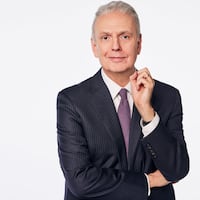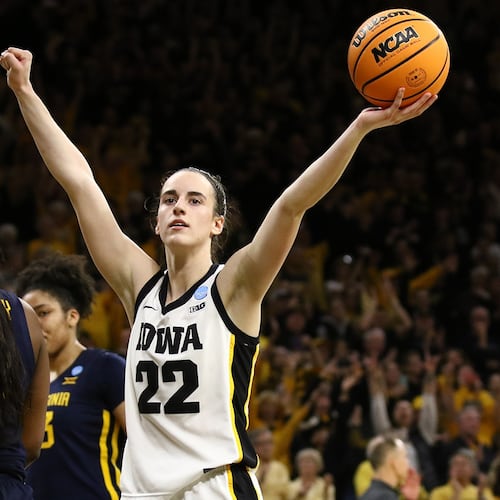Had the Braves opened as scheduled, Cole Hamels would have missed two months of the regular season. For the long-delayed opening day, he believes he'll be ready. Big difference.
The Braves were willing to pay $18 million for one season of Hamels’ services. They wouldn’t have spent nearly so much for an aging pitcher had they known said pitcher would aggravate a shoulder in January. He missed all of spring training, such as it was. Owing to COVID-19, every MLB player missed everything from March 13 through the end of June.
Those 3-1/2 months gave Hamels time to heal. On Friday, Day 1 of non-spring training, he threw a bullpen session at Truist Park — 35 pitches, give or take — and offered this pronouncement via Zoom: “The shoulder feels great.”
Then: “Now it’s just building up endurance, the thing we normally take care of in spring training, since this is the spring training I never had.”
Having Hamels — whose pro-rated salary is $6.7 million — available when this irregular season begins in three weeks would be no small thing. Three weeks of hurried July preparation won’t equate to the seven weeks of a normal spring. Starting pitchers won’t be expected to go six or seven innings. Said Braves manager Brian Snitker: “I don’t know that anybody is going to be ready to go five.”
This figures to benefit a team that has extra starters, who can be redeployed as fourth-to-sixth-inning relievers. Hamels gives the Braves a starter they wouldn’t have had in March/April/May. This is no small thing. At something approaching his best, he can still be a big deal.
Yes, he’s 36. His last excellent season was in 2016, his first full year with Texas after Philadelphia traded him at the 2015 deadline. But he still strikes people out, and he can still pitch. As a Cub, his ERA on the Fourth of July last season was 2.98. Then his shoulder started hurting. He missed all of July. He returned in August. In none of his four September starts did he complete five innings.
The Braves thought his shoulder was OK, or at least better. It wasn’t until it wasn’t. He tweaked it in a January workout. After baseball’s hiatus he did four/five FaceTime training sessions a week. “We stretched out my rehab process,” he said. “We added about 45 extra days because we weren’t in a rush.”
Hamels said he needs three “starts” of some sort over the next three weeks. He also conceded: “I don’t even know what that’s going to look like. I guess it might be against my own guys, which is always a kind of difficult thing to do. If I can throw roughly 50 to 60 pitches in a game environment, I’ll be good to go.”
Then again, he hasn’t seen a live batter in a while. Then again, no pitcher has.
Hamels: “It’s not as if I’m going to go out there expecting to pitch seven to nine innings. There’s going to be a gradual buildup process, and there’s going to be guys who will be able to piggyback on you, like in a high school or a college season. All that really matters is putting up zeroes. If you can put up two or put up five zeroes, that’s really helping the team, more so than (other pitchers) having to pick up and try to eat a lot of innings.”
Credit: Curtis Compton
Credit: Curtis Compton
Think of Hamels as this year's Dallas Keuchel. The Braves signed Keuchel last June to add a veteran to a then-sputtering rotation. (Mike Foltynewicz was demoted to Gwinnett two days after Keuchel made his first start.) Keuchel was paid $13 million to be a summer stabilizer and an October difference-maker. He managed the first; he started Games 1 and 4 of the NLDS, both of which the Braves lost.
Hamels has worked 100-1/3 postseason innings. He has 93 strikeouts. His team has won 10 of his 16 playoff starts. His October ERA is 3.41. At age 23, he was MVP of both the 2008 NLCS and World Series. The Braves have suddenly gotten good at making the playoffs. They’d like to get better at sticking around once there. There’s no question that signing Hamels was done with that in mind.
This assumes there’ll be a baseball October, which many folks doubt. Asked if he believes MLB can go the shortened distance, Hamels said: “That is honestly such an unknown. If we can honor the fact that we’re trying to stay as clean as possible, we can follow these protocols that MLB and the state and the federal (government) is putting out there — we just have to be smart. If we can keep each other accountable in that area, it’s for the better. A lot of us would rather be playing baseball than sitting at home. This is what we’re designed to do. This is what we love to do. It’s more foreign to be sitting at home without a schedule.”
Then: “We’re going to do everything we possibly can to make sure we do play 60 games. It’s just a matter of understanding what happens in cities. If we can do what we need to do to prevent it, there’s still a whole other city and a lot of people involved in trying to make sure this thing happens that we might not necessarily have a way to control.”
Hamels in a rotation with Mike Soroka, Max Fried and Foltynewicz and Sean Newcomb or Kyle Wright or Felix Hernandez could be something to see. “They’re going to be a really good pitching staff for a long time,” Hamels said. “Anything I can try to provide to make them better, I know that’s another reason why I’m here. They’re going to push me, which I like. I like the competition, especially (being) a few years older than them. We’re going to push each other.”
That was how it worked in Philadelphia, when the Phillies won the National League East five years running behind rotations that included Roy Halladay, Cliff Lee, Jamie Moyer and Roy Oswalt. Hamels was the kid in that crew. He’s no longer a Phil, no longer a kid. He’s a Brave. He could be a difference-making Brave.
About the Author
The Latest
Featured


